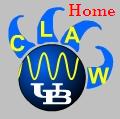Cerne Page-Home June 2023
| Cerne Home | Research | Teaching | Publications | People | Links |
|
|
Jovan (John) Cerne
Professor and Director of Undergraduate Studies in Physics
A.B., 1990, Princeton University Office : 128 Fronczak Hall |
New
materials are providing new challenges to to our understanding of basic
phenomena and new opportunities for technological applications. My research
is primarily directed at materials such as diluted magnetic semiconductors,
magnetic oxides, and high temperature superconductors. These mateials
have already been extensively studied using more convetional probes,
but there are still important fundamental mysteries that have yet to
be resolved. We have developed new experimental and analytical techniques
that promise to offer new insights into these materials. Infrared spectroscopy
is a powerful tool that probes the energy structure of a materials by
looking at the intensity of light that is transmitted through and reflected
from a material. We have taken this a step further by also looking at
the polarization of the transmitted and reflected light. This provides
important new information that is hidden from conventional spectroscopy.
I also am very interested in physics teaching. Teaching, learning, and research are inseparable constituents of my experience in physics. These three areas have merged and complemented each other, and it is difficult for me to imagine one without the others. My experimental interest in optics and polarized light has motivated me to begin work on simulations that teach basic wave concepts. One of those graphical interactive simulations can be found below. Please check out our Conceptual Learning Approach to Waves web site for more examples.
| This simulation demonstrates how new polarizations can be created by adding two perpendicularly polarized linear components or left and right circularly polarized components. Click the run buttton to start the wave traveling. Change the amplitudes and relative phase of the components to see how the resultant wave changes. |
 Conceptual Learning Approach to Waves |



